China and Covid19
Searching for Yue: Contact Tracing Information Exposes Sad Story Behind One Beijing Covid Case
Because Yue tested positive for Covid19, the entire country came to know the recent whereabouts of “the hardest-working man of China.”
Published
2 years agoon
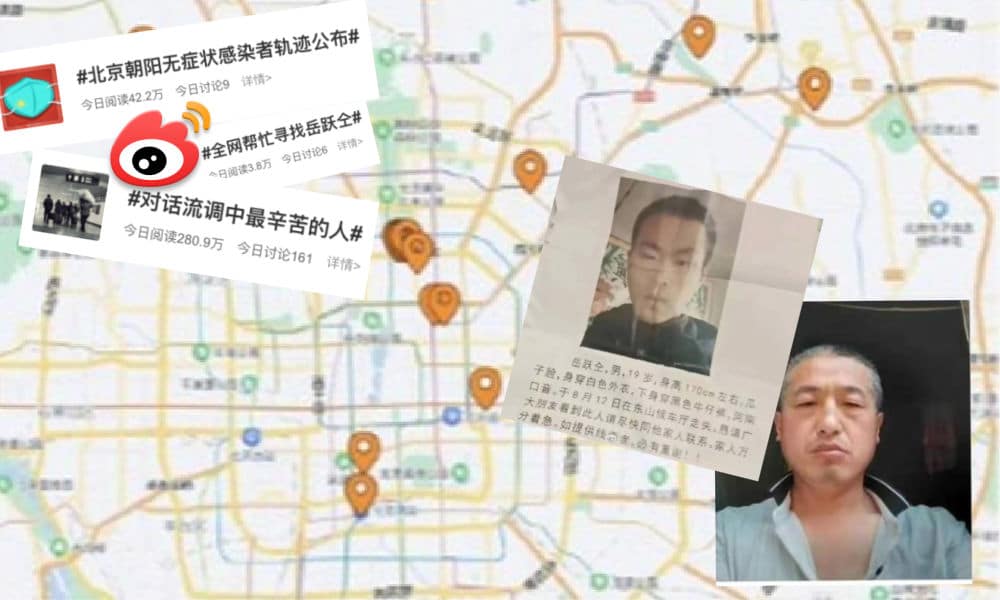
While being quarantined due to Covid19, he is going viral on Chinese social media. “The hardest-working Chinese man in contact tracing” has touched the hearts of many netizens, leading to public questions about the disappearance of his son – a story without a happy ending.
On January 18, one person tested positive for Covid19 in Chaoyang District, Beijing. That person, who was asymptomatic, was one of the three reported cases of Covid19 detected in the Chinese capital on Tuesday.
The patient’s contact tracing records showed that from January 1st of this year to January 18, in a time frame of 18 days, he went to many districts in Beijing and worked odd jobs all around the clock at more than twenty different construction sites throughout the city. This earned him the title of “the hardest-working Chinese man in contact tracing” (“流调中最辛苦的中国人”).
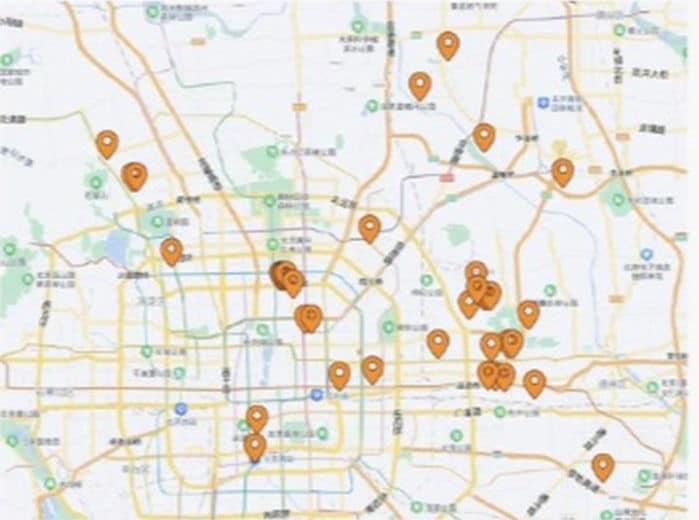
Yue went all around the city working odd jobs all around the clock.
In China News Weekly (中国新闻周刊), reporter Chao Xiang (赵翔) interviewed the Chaoyang Covid patient and provided more information about him. That article, titled “A Conversation with the ‘Hardest-Working Chinese in Contact Tracing Records'” (“对话”流调中最辛苦的中国人””) soon went viral on Chinese social media. (Pekingnology did a full translation on the article here).
Who is this hard-working and industrious man? It is the 44-year-old Mr. Yue, a migrant worker from Shandong’s Weihai who rents a tiny room in Shigezhuang for 700 yuan ($110) per month. Just as he was about to start his train journey from Beijing South Station to go home to his wife and youngest son in Weihai, anti-epidemic workers alerted him that he had tested positive for Covid19 and got him off the train.
While was immediately quarantined at a designated hospital in Beijing, his recent movements and personal story soon became a major item of discussion on WeChat and Weibo after a press conference and media release detailed his recent whereabouts (#北京朝阳无症状感染者轨迹公布#).
Although Yue formerly worked as a sailor, he is now a manual laborer in construction in Beijing. He started working in the city in search of his eldest son, who went missing at the age of 19 and who previously worked as a kitchen helper in Beijing.
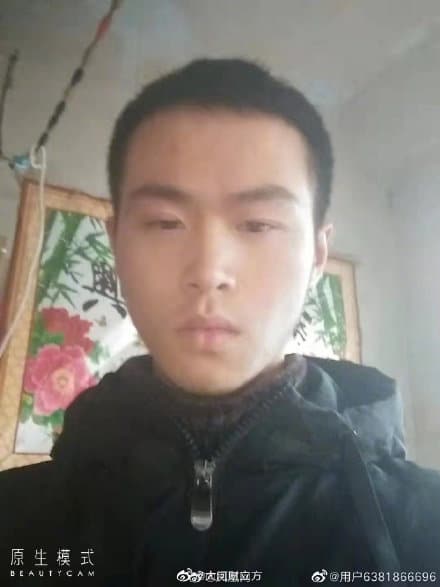
Yue Yuetong (岳跃仝)
Yue’s son, Yue Yuetong (岳跃仝), allegedly complained about a stomach ache when he was working at a food factory in Rongcheng, Weihai, in the summer of 2020. He was supposed to take a bus home, but he never got on that bus and never returned home again. Besides Beijing and Rongcheng, Mr. Yue went to a least ten other cities looking for his son, always believing that he could not have gone very far and that it was possible to find him.
Authorities allegedly were not very helpful in setting up a thorough search for the then 19-year-old. Yue told China News Weekly that it took weeks before the family could officially register Yue Yuetong as a missing person. Mr. Yue also claimed that the police did not trace his phone records and video surveillance in the initial days after he went missing due to privacy reasons.
Yue tells China News Weekly (translation by Pekingnology):
“I also asked in the hospital morgues. On October 12th, 2021, they [not clear who] saw me were petitioning, and told me that a corpse was of my eldest son, and asked me to go to Rongcheng Second Hospital to identify the corpse. I saw that man, whose face was hard to see but fat and round. My son is 1.74 meters tall, thin, and has a long face. I don’t think that was my son. I asked to test the bones of the body, but they weren’t willing to do that. They initially said the test would be done at Weihai Public Security Bureau which would take dozens of days. Later, it was said that the forensic doctor was on a business trip. After half a month, they/he [unclear] called me and said don’t bother them/him anymore.
My wife couldn’t stop crying when she heard that our eldest son was dead. I don’t believe that corpse was my son.
When this dead body was first discovered, I asked the police station, and they said it was not my eldest son. As soon as I began petitioning, they said it was my eldest son in order to close the case.”
All the money Yue earns has gone towards the search for his son and towards his parents who suffer from multiple health problems. The medicine and medical costs for his bedridden paralyzed father and for his mother, who recently broke her arm, are not covered by insurance and Yue does all he can to cover these for them. His wife makes a meager income and his youngest son, who is only 12, is attending junior high school.
Despite his tough life, Yue told China News Weekly he does not feel sorry for himself.
There are multiple reasons why Yue’s story struck a chord with Chinese netizens. One of the reasons is that although his story stands out, he is not the only one facing such difficulties in China today. In that regard, the responses to Yue’s story bear some resemblance to the reactions dominating social media after the publications of the essay by Fan Yusu, a female migrant worker living in Beijing.
Her story about her life and struggles with work, marriage and family became a viral hit in 2017 (read more here). At the time, commenters wrote “We are all Fan Yusu,” suggesting that Fan’s account was just one voice among thousands of migrant workers dealing with similar problems and struggles.
“Yue is not the only hard-working Chinese person,” one commenter wrote, with another person writing: “I might work even more than him.”
Numerous netizens said Yue’s story made them tear up due to his dignity and resilience, something that many people admire him for – especially at a time of Covid19.
There were also many who hoped that Yue, who received so much attention over his peculiar contact tracing records, could use his sudden, unexpected fame to his advantage to get the help of the public and police to finally find his son. The calls to conduct a massive search for Yue’s son also came with criticism for how the case was apparently handled by authorities back in 2020 and 2021.
The hashtag “Yue Yuetong Come Home” (#岳跃仝请回家#) soon went trending on Chinese social media, together with the hashtag “The Internet Helps Searching for Yue Yuetong” (#全网帮忙寻找岳跃仝#).
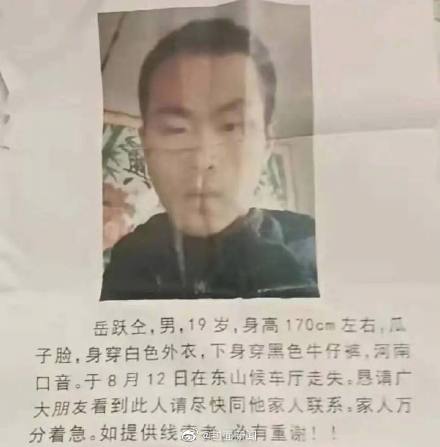
The missing person flyer for Yue Yuetong from 2020.
Meanwhile, the police in Rongcheng responded to the public’s questions and comments on January 20th, saying they would re-investigate to “understand” the case.
On January 21st, Weihai authorities issued a statement regarding the story. The statement explains that the Rongcheng City Public Security Bureau was notified on the evening of August 12 of 2020 by Li, Yue’s wife, that her son had gone missing earlier that day after he left work.
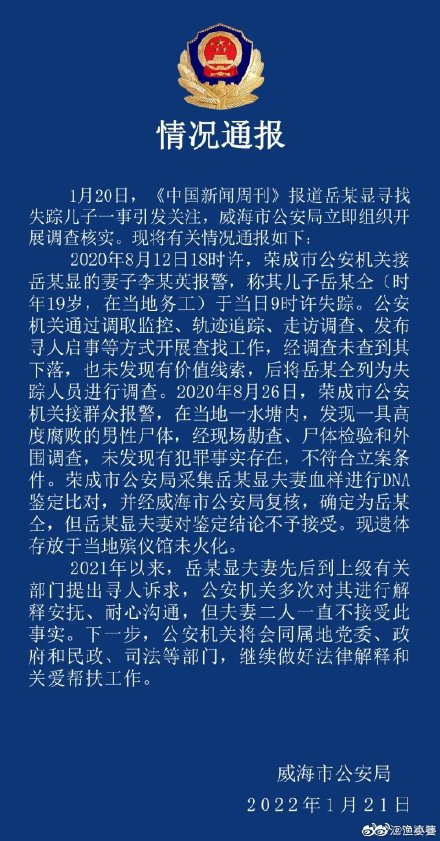
The police claim that their team investigated the case and tracked Yue Yuetong’s last known movements and retrieved surveillance details. After their search efforts did not result in any leads, they classified Yuetong as a missing person.
On August 26 of 2020, two weeks after Yue Yueyong went missing, the Rongcheng authorities learned of a deceased person and found a man’s body. After his DNA was compared to the DNA from Yuetong’s parents, the authorities confirmed that the remains belonged to Yue Yuetong. They also said there were no suspicious circumstances surrounding his death.
According to the statement, Yue Yuetong’s parents refused to believe that the deceased man was their son. Despite repeated attempts made by the local police to communicate to the family that their ongoing requests to find their missing son were in vain, the family did not want to accept the facts. The remains have been transferred to a funeral home.
One Weibo commenter wrote: “So to summarize this, they already knew their son was dead around ten days after he went missing, but they could not accept it and traveled the entire country to look for him…I’m speechless. What a tragedy.”
“So, their son was actually already gone two years ago.. but they couldn’t identify him because he’d bee in the water and the parents did not want to believe it despite the DNA results. They kept searching for two year. How sad!”
Other people criticized the police for not apologizing to the family about the circumstances surrounding the investigation into their son’s disappearance, and also express their hope that Mr. Yue can receive psychological help at the Beijing hospital where he is still being treated for Covid.
Ironically, it was his bad luck of catching Covid19 and his remarkable contact tracing records that triggered the public’s interest and finally put an end to the long and costly search for his son.
Despite the official statement, there are still lingering questions left unanswered. Why did the police allow Mr. Yue and his wife to continue searching for their son for so long if they already knew he was dead? Why was Mr. Yue so convinced that the body that was found was not his son? How and why did Yue Yuetong die? Many of these questions might never be answered. One thing that the majority of those discussing this topic agree on is that they wish Mr. Yue a speedy recovery, hoping that he will be able to find some peace of mind after struggling for so long.
By Manya Koetse, with contributions by Miranda Barnes
Spotted a mistake or want to add something? Please let us know in comments below or email us. First-time commenters, please be patient – we will have to manually approve your comment before it appears.
©2022 Whatsonweibo. All rights reserved. Do not reproduce our content without permission – you can contact us at info@whatsonweibo.com.
Manya Koetse is the founder and editor-in-chief of whatsonweibo.com. She is a writer, public speaker, and researcher (Sinologist, MPhil) on social trends, digital developments, and new media in an ever-changing China, with a focus on Chinese society, pop culture, and gender issues. She shares her love for hotpot on hotpotambassador.com. Contact at manya@whatsonweibo.com, or follow on Twitter.

China and Covid19
Sick Kids, Worried Parents, Overcrowded Hospitals: China’s Peak Flu Season on the Way
“Besides Mycoplasma infections, cases include influenza, Covid-19, Norovirus, and Adenovirus. Heading straight to the hospital could mean entering a cesspool of viruses.”
Published
5 months agoon
November 22, 2023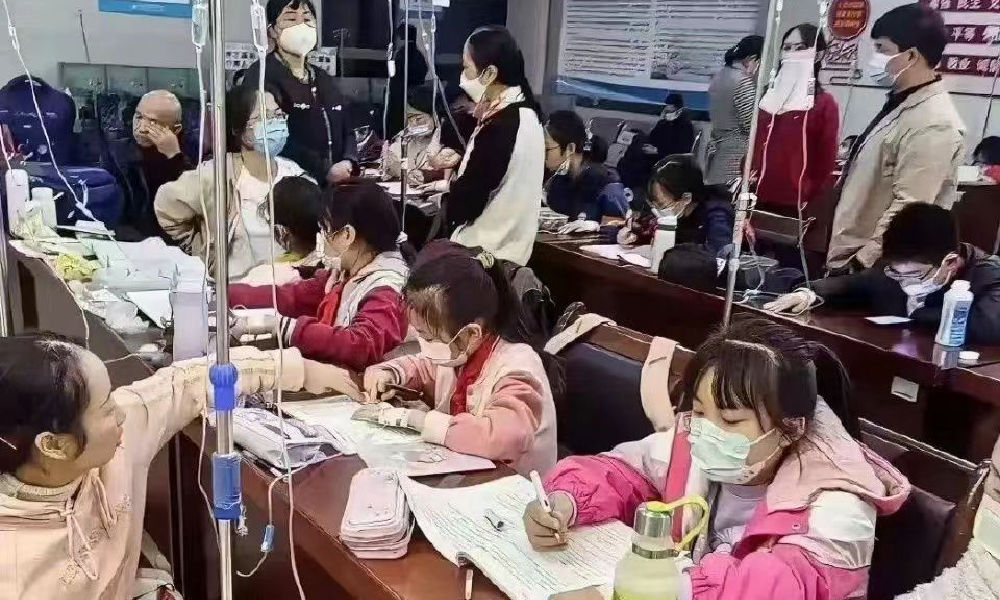
In the early morning of November 21, parents are already queuing up at Xi’an Children’s Hospital with their sons and daughters. It’s not even the line for a doctor’s appointment, but rather for the removal of IV needles.
The scene was captured in a recent video, only one among many videos and images that have been making their rounds on Chinese social media these days (#凌晨的儿童医院拔针也要排队#).
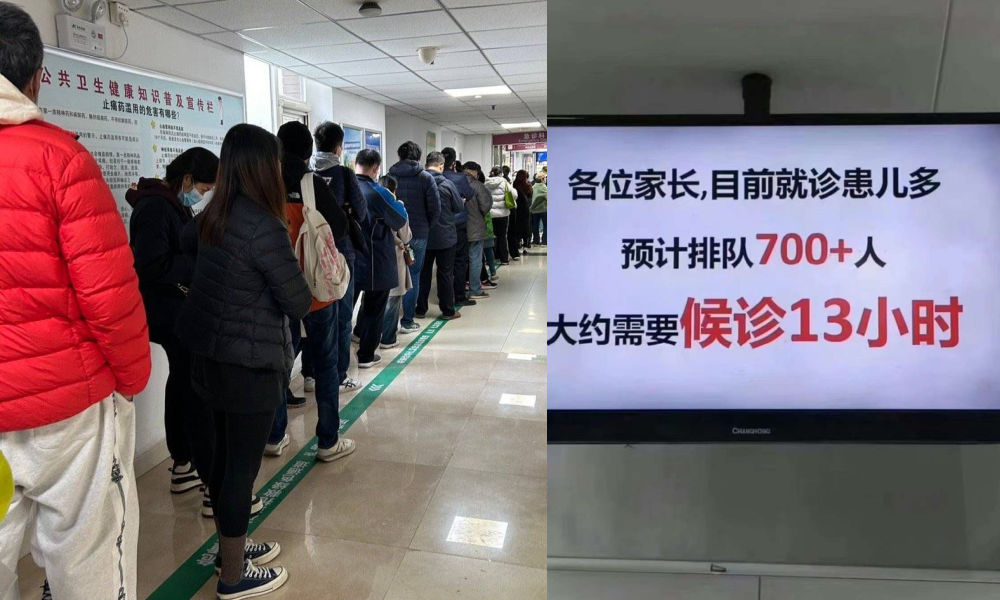
One photo shows a bulletin board at a local hospital warning parents that over 700 patients are waiting in line, estimating a waiting time of more than 13 hours to see a doctor.
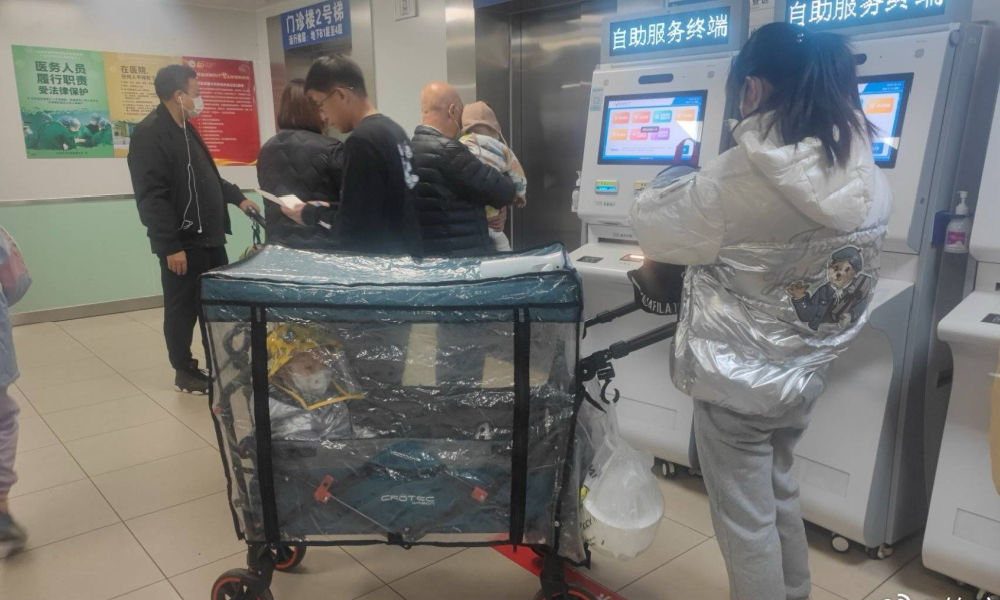
Another image shows children doing their homework while hooked up on an IV.

Recent discussions on Chinese social media platforms have highlighted a notable surge in flu cases. The ongoing flu season is particularly impacting children, with multiple viruses concurrently circulating and contributing to a high incidence of respiratory infections.
Among the prevalent respiratory infections affecting children are Mycoplasma pneumoniae infections, influenza, and Adenovirus infection.
The spike in flu cases has resulted in overcrowded children’s hospitals in Beijing and other Chinese cities. Parents sometimes have to wait in line for hours to get an appointment or pick up medication.
According to one reporter at Haibao News (海报新闻), there were so many patients at the Children’s Hospital of Capital Institute of Pediatrics (首都儿科研究所) on November 21st that the outpatient desk stopped accepting new patients by the afternoon. Meanwhile, 628 people were waiting in line to see a doctor at the emergency department.
Reflecting on the past few years, the current flu season marks China’s first ‘normal’ flu peak season since the outbreak of Covid-19 in late 2019 / early 2020 and the end of its stringent zero-Covid policies in December 2022. Compared to many other countries, wearing masks was also commonplace for much longer following the relaxation of Covid policies.
Hu Xijin, the well-known political commentator, noted on Weibo that this year’s flu season seems to be far worse than that of the years before. He also shared that his own granddaughter was suffering from a 40 degrees fever.
“We’re all running a fever in our home. But I didn’t dare to go to the hospital today, although I want my child to go to the hospital tomorrow. I heard waiting times are up to five hours now,” one Weibo user wrote.
“Half of the kids in my child’s class are sick now. The hospital is overflowing with people,” another person commented.
One mother described how her 7-year-old child had been running a fever for eight days already. Seeking medical attention on the first day, the initial diagnosis was a cold. As the fever persisted, daily visits to the hospital ensued, involving multiple hours for IV fluid administration.
While this account stems from a single Weibo post within a fever-advice community, it highlights a broader trend: many parents swiftly resort to hospital visits at the first signs of flu or fever. Several factors contribute to this, including a lack of General Practitioners in China, making hospitals the primary choice for medical consultations also in non-urgent cases.
There is also a strong belief in the efficacy of IV infusion therapy, whether fluid-based or containing medication, as the quickest path to recovery. Multiple factors contribute to the widespread and sometimes irrational use of IV infusions in China. Some clinics are profit-driven and see IV infusions as a way to make more money. Widespread expectations among Chinese patients that IV infusions will make them feel better also play a role, along with some physicians’ lacking knowledge of IV therapy or their uncertainty to distinguish bacterial from viral infections (read more here)
To prevent an overwhelming influx of patients to hospitals, Chinese state media, citing specialists, advise parents to seek medical attention at the hospital only for sick infants under three months old displaying clear signs of fever (with or without cough). For older children, it is recommended to consult a doctor if a high fever persists for 3 to 5 days or if there is a deterioration in respiratory symptoms. Children dealing with fever and (mild) respiratory symptoms can otherwise recover at home.
One Weibo blogger (@奶霸知道) warned parents that taking their child straight to the hospital on the first day of them getting sick could actually be a bad idea. They write:
“(..) pediatric departments are already packed with patients, and it’s not just Mycoplasma infections anymore. Cases include influenza, Covid-19, Norovirus, and Adenovirus. And then, of course, those with bad luck are cross-infected with multiple viruses at the same time, leading to endless cycles. Therefore, if your child experiences mild coughing or a slight fever, consider observing at home first. Heading straight to the hospital could mean entering a cesspool of viruses.”
The hashtag for “fever” saw over 350 million clicks on Weibo within one day on November 22.
Meanwhile, there are also other ongoing discussions on Weibo surrounding the current flu season. One topic revolves around whether children should continue doing their homework while receiving IV fluids in the hospital. Some hospitals have designated special desks and study areas for children.
Although some commenters commend the hospitals for being so considerate, others also remind the parents not to pressure their kids too much and to let them rest when they are not feeling well.
Opinions vary: although some on Chinese social media say it's very thoughtful for hospitals to set up areas where kids can study and read, others blame parents for pressuring their kids to do homework at the hospital instead of resting when not feeling well. pic.twitter.com/gnQD9tFW2c
— Manya Koetse (@manyapan) November 22, 2023
By Manya Koetse, with contributions from Miranda Barnes
Get the story behind the hashtag. Subscribe to What’s on Weibo here to receive our newsletter and get access to our latest articles:
Spotted a mistake or want to add something? Please let us know in comments below or email us. First-time commenters, please be patient – we will have to manually approve your comment before it appears.
©2023 Whatsonweibo. All rights reserved. Do not reproduce our content without permission – you can contact us at info@whatsonweibo.com.
China and Covid19
Repurposing China’s Abandoned Nucleic Acid Booths: 10 Innovative Transformations
Abandoned nucleic acid booths are getting a second life through these new initiatives.
Published
11 months agoon
May 19, 2023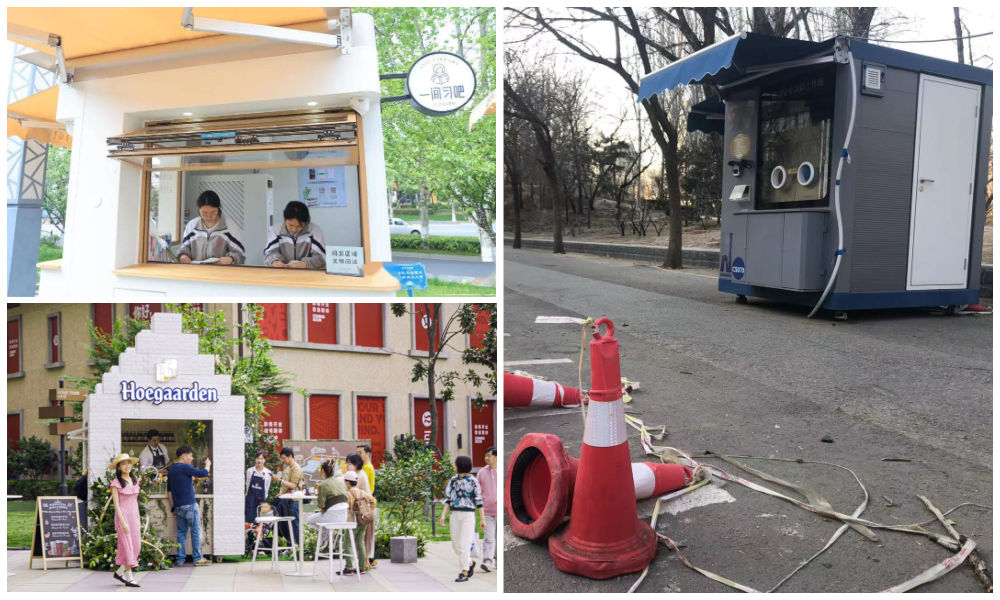
During the pandemic, nucleic acid testing booths in Chinese cities were primarily focused on maintaining physical distance. Now, empty booths are being repurposed to bring people together, serving as new spaces to serve the community and promote social engagement.
Just months ago, nucleic acid testing booths were the most lively spots of some Chinese cities. During the 2022 Shanghai summer, for example, there were massive queues in front of the city’s nucleic acid booths, as people needed a negative PCR test no older than 72 hours for accessing public transport, going to work, or visiting markets and malls.
The word ‘hésuān tíng‘ (核酸亭), nucleic acid booth (also:核酸采样小屋), became a part of China’s pandemic lexicon, just like hésuān dìtú (核酸地图), the nucleic acid test map lauched in May 2022 that would show where you can get a nucleic test.
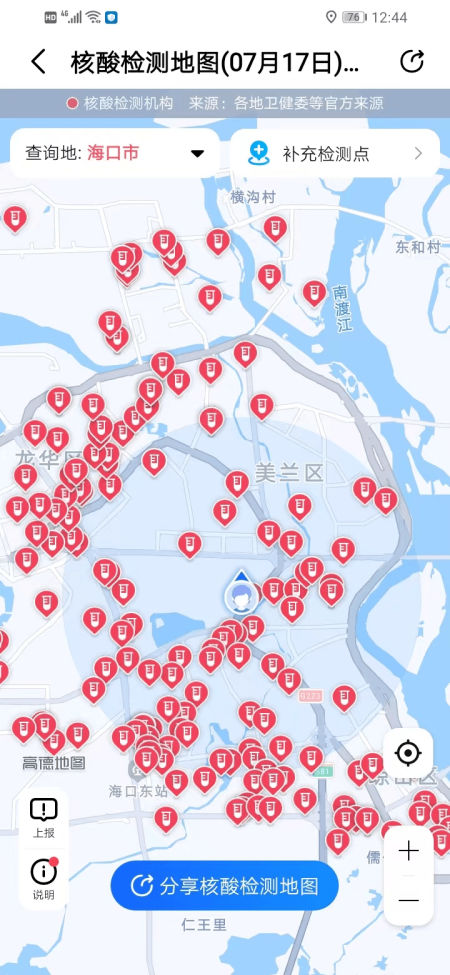
Example of nucleic acid test map.
During Halloween parties in Shanghai in 2022, some people even came dressed up as nucleic test booths – although local authorities could not appreciate the creative costume.
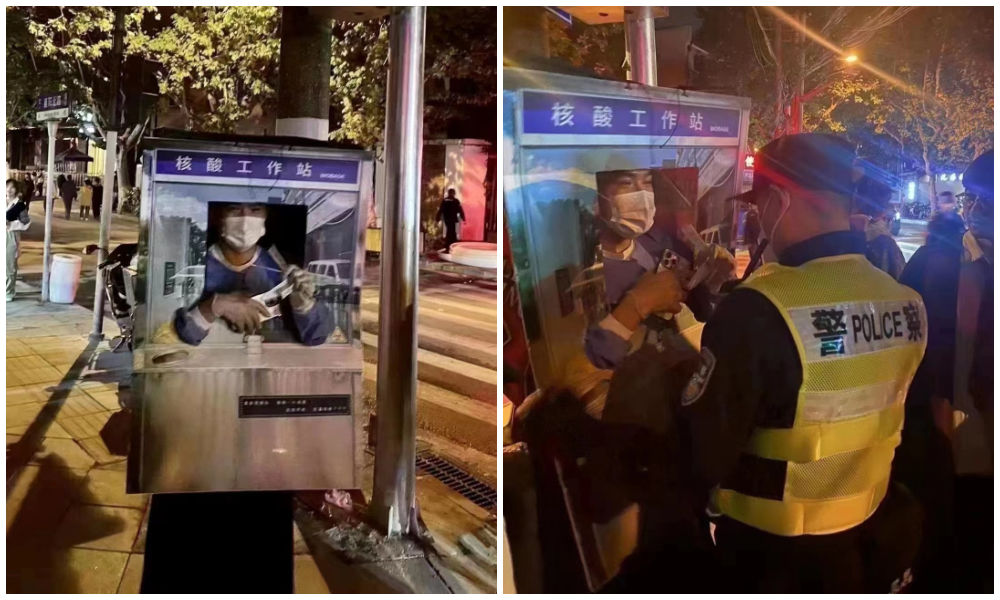
Halloween 2022: dressed up as nucliec acid booths. Via @manyapan twitter.
In December 2022, along with the announced changed rules in China’s ‘zero Covid’ approach, nucleic acid booths were suddenly left dismantled and empty.
With many cities spending millions to set up these booths in central locations, the question soon arose: what should they do with the abandoned booths?
This question also relates to who actually owns them, since the ownership is mixed. Some booths were purchased by authorities, others were bought by companies, and there are also local communities owning their own testing booths. Depending on the contracts and legal implications, not all booths are able to get a new function or be removed yet (Worker’s Daily).
In Tianjin, a total of 266 nucleic acid booths located in Jinghai District were listed for public acquisition earlier this month, and they were acquired for 4.78 million yuan (US$683.300) by a local food and beverage company which will transform the booths into convenience service points, selling snacks or providing other services.
Tianjin is not the only city where old nucleic acid testing booths are being repurposed. While some booths have been discarded, some companies and/or local governments – in cooperation with local communities – have demonstrated creativity by transforming the booths into new landmarks. Since the start of 2023, different cities and districts across China have already begun to repurpose testing booths. Here, we will explore ten different way in which China’s abandoned nucleic test booths get a second chance at a meaningful existence.
1: Pharmacy/Medical Booths
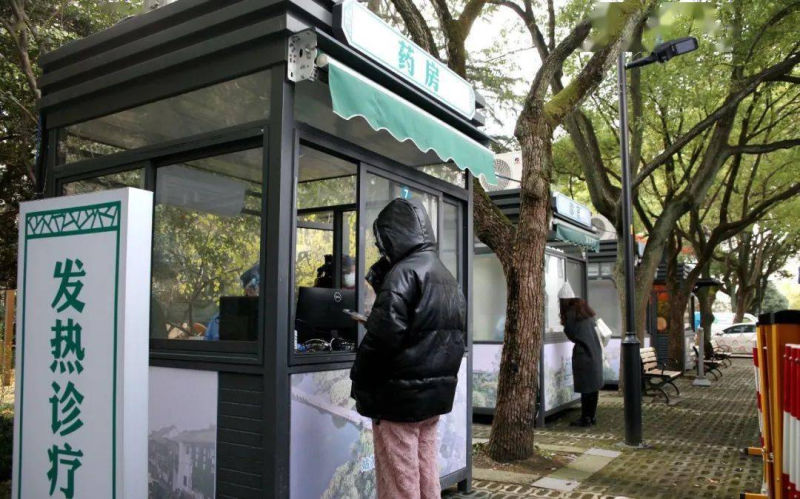
Via ‘copyquan’ republished on Sohu.
Blogger ‘copyquan’ recently explored various ways in which abandoned PCR testing points are being repurposed.
One way in which they are used is as small pharmacies or as medical service points for local residents (居民医疗点). Alleviating the strain on hospitals and pharmacies, this was one of the earliest ways in which the booths were repurposed back in December of 2022 and January of 2023.
Chongqing, Tianjin, and Suzhou were among earlier cities where some testing booths were transformed into convenient medical facilities.
2: Market Stalls
In Suzhou, Jiangsu province, the local government transformed vacant nucleic acid booths into market stalls for the Spring Festival in January 2022, offering them free of charge to businesses to sell local products, snacks, and traditional New Year goods.
The idea was not just meant as a way for small businesses to conveniently sell to local residents, it was also meant as a way to attract more shoppers and promote other businesses in the neighborhood.
3: Community Service Center

Small grid community center in Shizhuang Village, image via Sohu.
Some residential areas have transformed their local nucleic acid testing booths into community service centers, offering all kinds of convenient services to neighborhood residents.
These little station are called wǎnggé yìzhàn (网格驿站) or “grid service stations,” and they can serve as small community centers where residents can get various kinds of care and support.
4: “Refuel” Stations
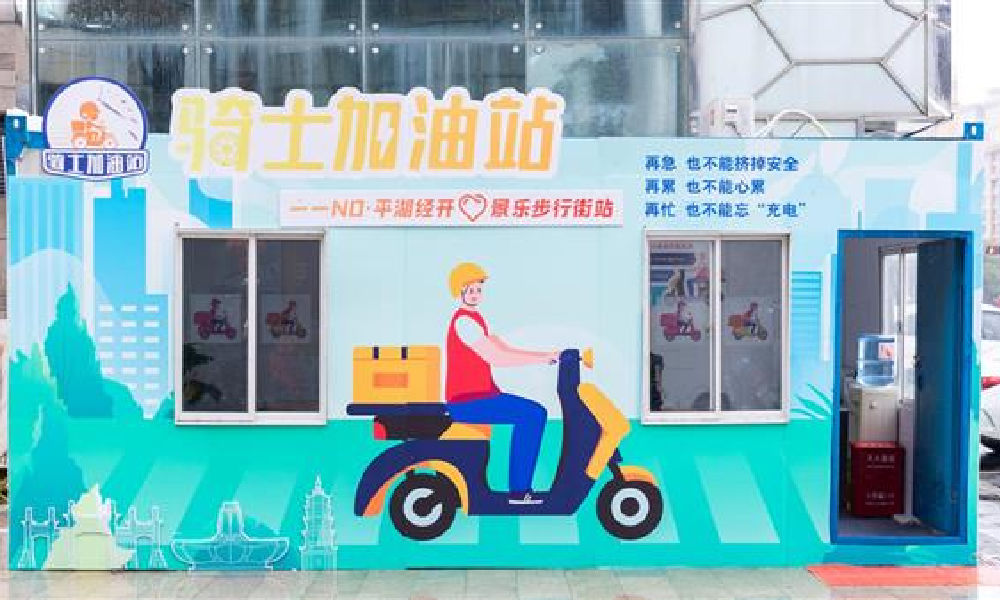
In February of this year, 100 idle nucleic acid sampling booths were transformed into so-called “Rider Refuel Stations” (骑士加油站) in Zhejiang’s Pinghu. Although it initially sounds like a place where delivery riders can fill up their fuel tanks, it is actually meant as a place where they themselves can recharge.
Delivery riders and other outdoor workers can come to the ‘refuel’ station to drink some water or tea, warm their hands, warm up some food and take a quick nap.
5: Free Libraries
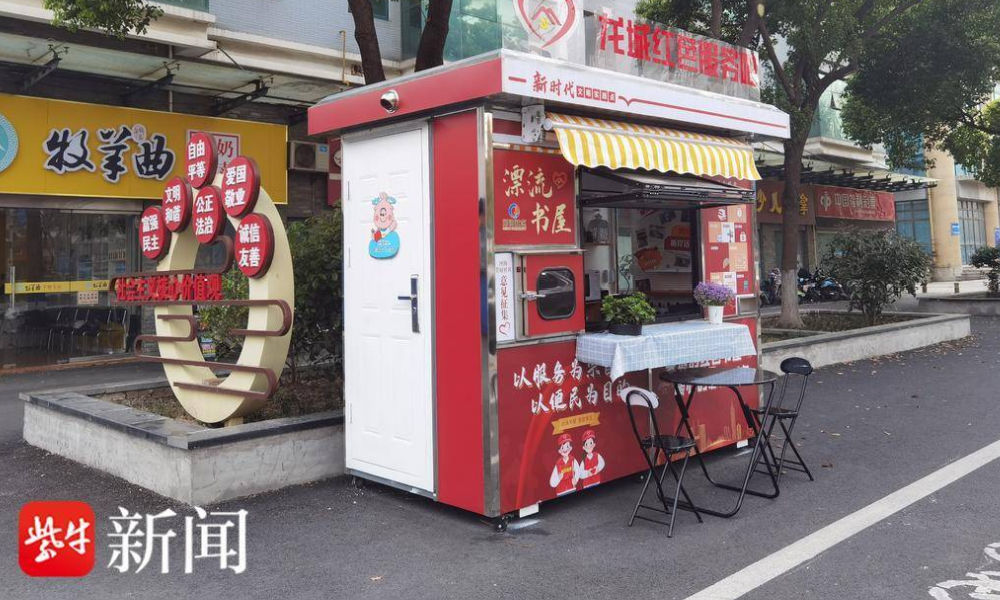
image via sohu.
In various Chinese cities, abandoned nucleic acid booths have been transformed into little free libraries where people can grab some books to read, donate or return other books, and sit down for some reading.
Changzhou is one of the places where you’ll find such “drifting bookstores” (漂流书屋) (see video), but similar initiatives have also been launched in other places, including Suzhou.
6: Study Space
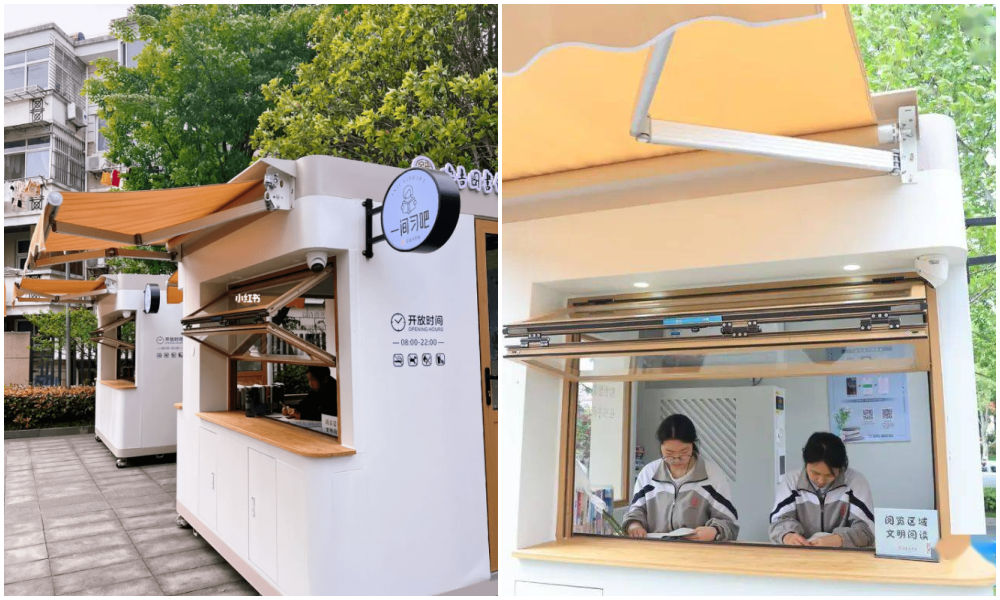
Photos via Copyquan’s article on Sohu.
Another innovative way in which old testing points are being repurposed is by turning them into places where students can sit together to study. The so-called “Let’s Study Space” (一间习吧), fully airconditioned, are opened from 8 in the morning until 22:00 at night.
Students – or any citizens who would like a nice place to study – can make online reservations with their ID cards and scan a QR code to enter the study rooms.
There are currently ten study booths in Anji, and the popular project is an initiative by the Anji County Library in Zhejiang (see video).
7: Beer Kiosk
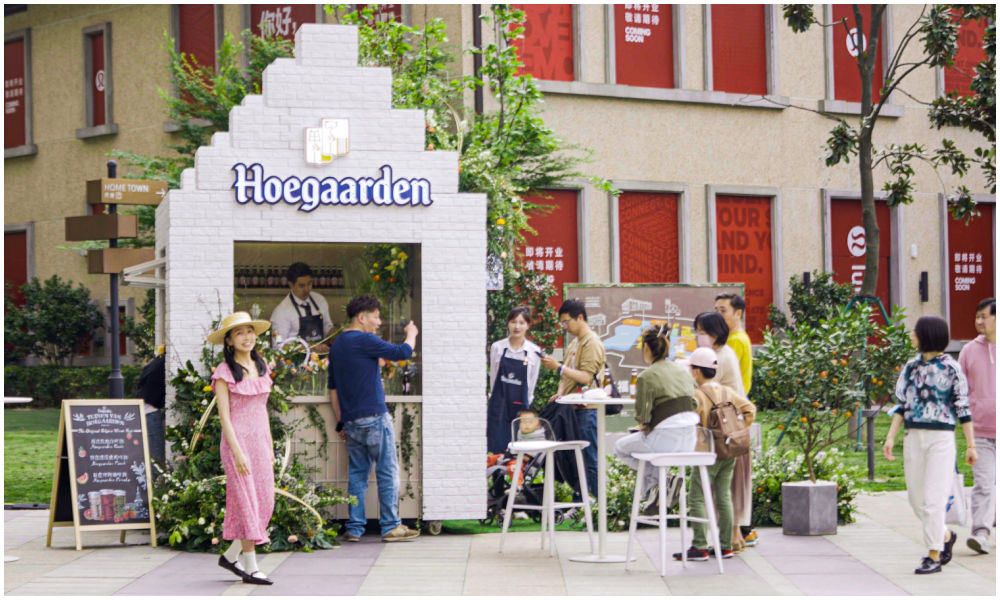
Hoegaarden beer shop, image via Creative Adquan.
Changing an old nucleic acid testing booth into a beer bar is a marketing initiative by the Shanghai McCann ad agency for the Belgium beer brand Hoegaarden.
The idea behind the bar is to celebrate a new spring after the pandemic. The ad agency has revamped a total of six formr nucleic acid booths into small Hoegaarden ‘beer gardens.’
8: Police Box
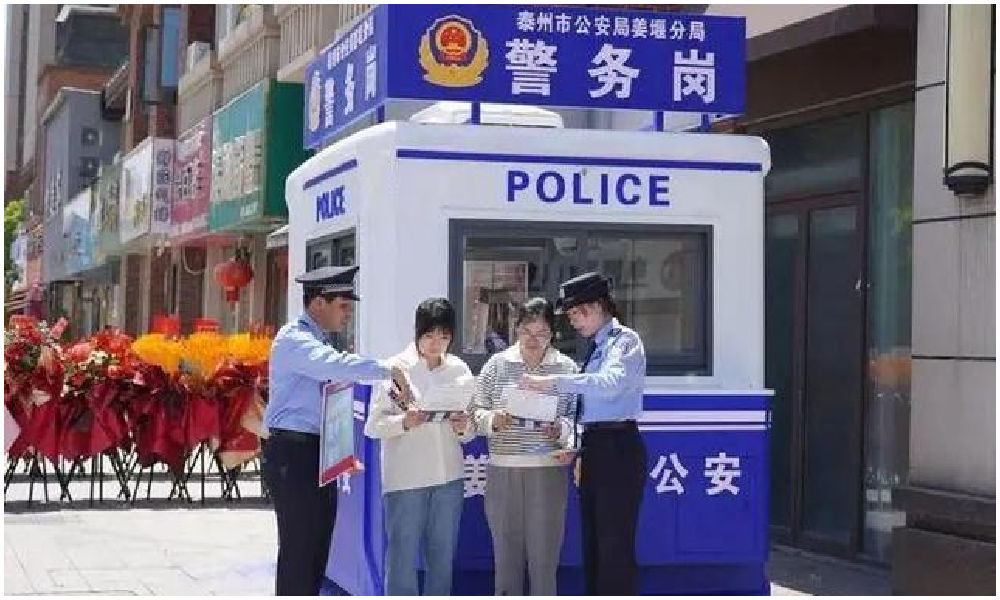
In Taizhou City, Jiangsu Province, authorities have repurposed old testing booths and transformed them into ‘police boxes’ (警务岗亭) to enhance security and improve the visibility of city police among the public.
Currently, a total of eight vacant nucleic acid booths have been renovated into modern police stations, serving as key points for police presence and interaction with the community.
9: Lottery Ticket Booths
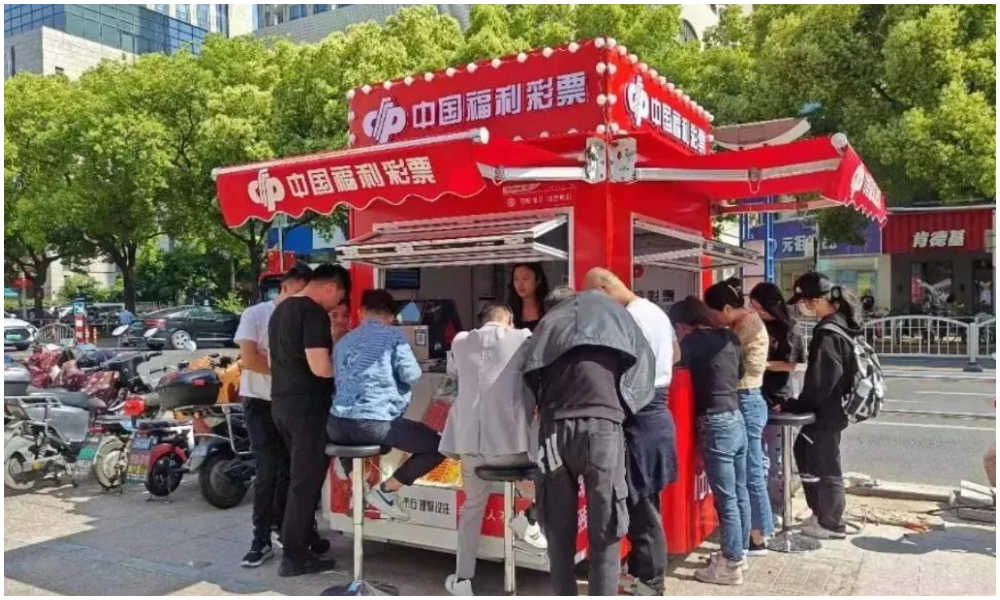
Image via The Paper
Some nucleic acid booths have now been turned into small shops selling lottery tickets for the China Welfare Lottery. One such place turning the kiosks into lottery shops is Songjiang in Shanghai.
Using the booths like this is a win-win situation: they are placed in central locations so it is more convenient for locals to get their lottery tickets, and on the other hand, the sales also help the community, as the profits are used for welfare projects, including care for the elderly.
10: Mini Fire Stations
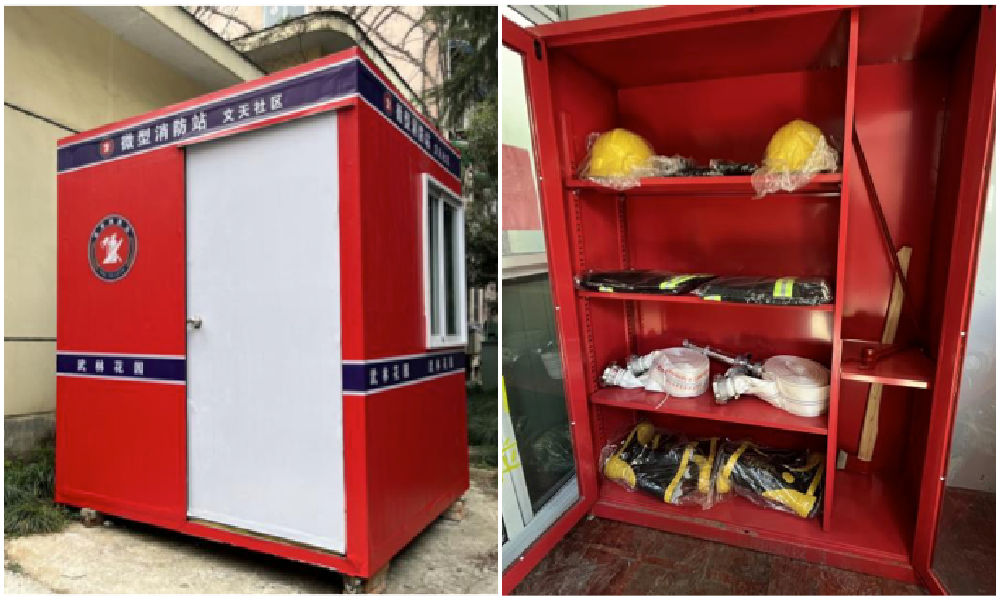
Micro fire stations, images via ZjNews.
Some communities decided that it would be useful to repurpose the testing points and turn them into mini fire kiosks, just allowing enough space for the necessary equipment to quickly respond to fire emergencies.
Want to read more about the end of ‘zero Covid’ in China? Check our other articles here.
By Manya Koetse,
Get the story behind the hashtag. Subscribe to What’s on Weibo here to receive our newsletter and get access to our latest articles:
Spotted a mistake or want to add something? Please let us know in comments below or email us. First-time commenters, please be patient – we will have to manually approve your comment before it appears.
©2023 Whatsonweibo. All rights reserved. Do not reproduce our content without permission – you can contact us at info@whatsonweibo.com.
Subscribe

Weibo Watch: The Battle for the Bottom Bed

Zara Dress Goes Viral in China for Resemblance to Haidilao Apron

“Old Bull Eating Young Grass”: 86-Year-Old Chinese Painter Fan Zeng Marries 36-Year-Old Xu Meng

Chengdu Disney: The Quirkiest Hotspot in China

Where to Eat and Drink in Beijing: Yellen’s Picks

The ‘Two Sessions’ Suggestions: Six Proposals Raising Online Discussions

Top 9 Chinese Movies to Watch This Spring Festival Holiday

Party Slogan, Weibo Hashtag: “The Next China Will Still Be China”

From Pitch to Politics: About the Messy Messi Affair in Hong Kong (Updated)

Looking Back on the 2024 CMG Spring Festival Gala: Highs, Lows, and Noteworthy Moments

Two Years After MU5735 Crash: New Report Finds “Nothing Abnormal” Surrounding Deadly Nose Dive

More than Malatang: Tianshui’s Recipe for Success

In Hot Water: The Nongfu Spring Controversy Explained

“Old Bull Eating Young Grass”: 86-Year-Old Chinese Painter Fan Zeng Marries 36-Year-Old Xu Meng

The Benz Guy from Baoding and the Granny Xu Line-Cutting Controversy
Get in touch
Would you like to become a contributor, or do you have any tips or suggestions? Get in touch here!
Popular Reads
-

 China Insight2 months ago
China Insight2 months agoThe ‘Two Sessions’ Suggestions: Six Proposals Raising Online Discussions
-

 China Arts & Entertainment3 months ago
China Arts & Entertainment3 months agoTop 9 Chinese Movies to Watch This Spring Festival Holiday
-

 China Media2 months ago
China Media2 months agoParty Slogan, Weibo Hashtag: “The Next China Will Still Be China”
-

 China World2 months ago
China World2 months agoFrom Pitch to Politics: About the Messy Messi Affair in Hong Kong (Updated)





